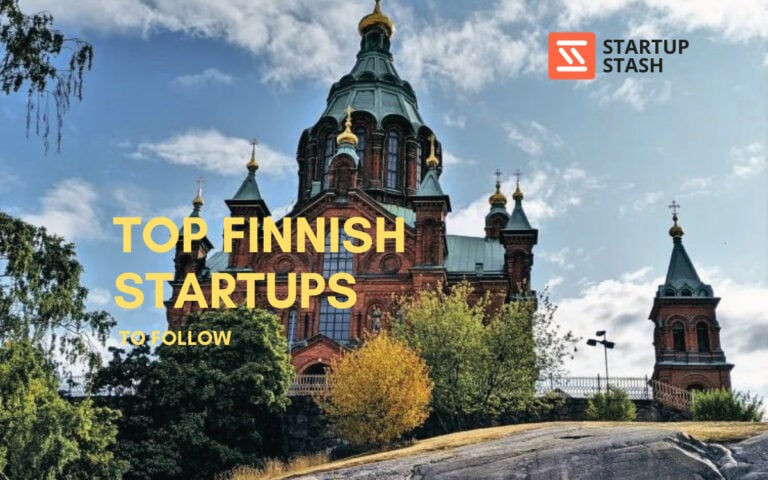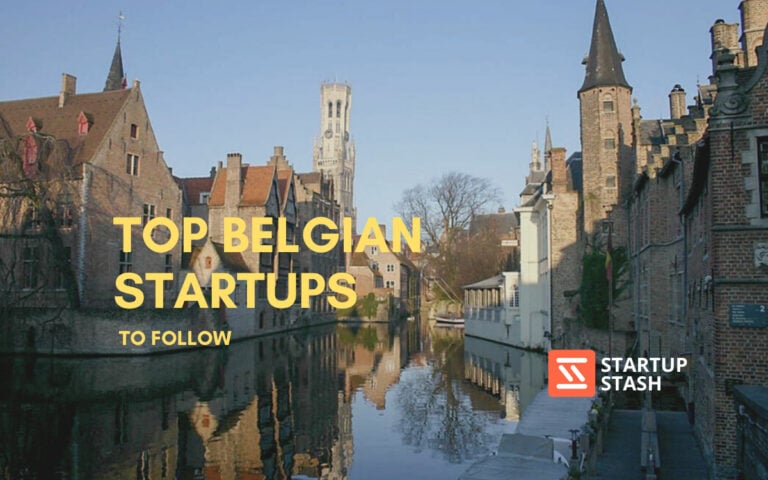Ethereum (ETH) is the native cryptocurrency of the Ethereum blockchain, a distributed, open-source blockchain platform released in 2015. Ethereum's blockchain was created by computer science student Vitalik Buterin and a group of other founders after they saw the potential in Bitcoin's open-source technology beyond its original payment processing use case. By expanding Bitcoin's initial idea with code, Ethereum has created a blockchain that can execute fully autonomous smart contracts and a platform for developers to create decentralized applications (DApps) on top of the Ethereum network.
In this list, we have mentioned the Top 11 Ethereum-Based Projects along with their features.
1. Compound
![]()
Compound is a Defi borrowing and lending platform built on Ethereum. It is the blockchain solution to a traditional money market. Compound is a decentralized, incentive-based platform that operates like the conventional financial market. More simply said, the decentralized app facilitates the deposit of digital assets into lending pools accessible by borrowers. In return, depositors get interested in the funds they lend. Customers can borrow and lend a variety of cryptocurrencies through the app. As a result, interest rates on both sides of a transaction are tied to the market forces of supply and demand for individual cryptocurrencies. Competitive interest rates are significantly higher than the simple interest rates offered by other lenders.
Key Features:
-
Compound is well positioned for expansion from a strategic perspective.
-
Apps like this that provide a functionally equivalent but superior experience to real-world ventures stand to gain as public interest in cryptocurrencies grows.
-
If you contribute assets like cryptocurrencies to Compound's liquidity pool, you can earn compound interest on those assets. Interest rates on compound balances fluctuate automatically based on the supply and demand for the goods you're interested in. Since there is no lockup period, collateral can be withdrawn or paid at any time. Compound's use of smart contracts to protect the lenders' ownership interests in the monies they deposit is a key feature.
2. DeversiFi
![]()
Due to the release of layer 2.0 in the third quarter of 2020, DeversiFi will have a lead over many competing custodial service platforms. In comparison to its competitors, the platform's ability to process over 9,000 Ethereum transactions per second is a major improvement. As of recently, DeversiFi has been utilizing off-chain order books. In contrast, its settlement is handled via the Ethereum blockchain. There is no longer any need for customers to blindly put their faith in the exchange in order to take advantage of the swift order books and quick execution they provide.
Key Features:
-
Rain, a cryptocurrency exchange based in Bahrain, has been given the green light by the country's governing body, the Central Bank of Bahrain (CBB).
-
BitMEX Ventures and Blockwater, a cryptocurrency firm located in Kuwait, spearheaded a $2.5 million seed fundraising round that enabled the exchange's start.
-
Based on StarkWare's Validium technology, a Layer-2 scaling solution that stores information off-chain and processes computation with zero-knowledge proofs, the new exchange is able to function.
-
DeversiFi is bringing the latest scaling improvement for Ethereum, Validium, to the forefront for the benefit of users everywhere. Validium joins zkRollups, Optimistic Rollups, and Plasma as very promising scaling improvements for Ethereum.
-
If DeversiFi 2.0 becomes popular, more development efforts will start using Validium.
3. Orion Protocol
![]()
The Defi ecosystem itself is where this project's strength lies, not elsewhere. By creating a single pool of liquidity for the entire cryptocurrency market, Orion Protocol addresses some of Defi's core issues (CEXs, DEXs, swapping pools). Whether your cryptocurrency holdings are in a centralized or decentralized exchange, the Orion Protocol, an open-source decentralized platform, can significantly mitigate your risk. In August 2020, Orion Protocol became one of the first projects to start using Dynamic Coin Offering (DYCO) (DYCO).
Key Features:
-
With the new token sale mechanism, buyers can receive a refund of up to 80% of their initial investment for utility tokens backed by USD for up to 16 months.
-
Orion Terminal is a streamlined trading terminal that compiles extensive features from the world's leading controlled and decentralized exchanges.
-
This instrument provides a decentralized interface to the entire crypto market's liquidity.
-
You can access the liquidity of centralized exchanges, decentralized exchanges, and swapping pools in one spot.
4. Balancer
![]()
This spring, the automated market maker (AMM) protocol Balancer made its debut on the Ethereum main net, allowing users to create programmable pools of liquid assets. While the widely used AMM Uniswap only allows for pools of two tokens with a 1:1 asset weighting, Balancer pools can include as many as eight tokens and any weighting among them.
In this framework, liquidity providers can make use of their unused Ethereum-based tokens in a variety of ways to generate revenue.
Key Features:
-
To further bootstrap the system, Balancer has launched a liquidity mining campaign that will reward Balancer LPs with BAL governance tokens.
-
Instead of paying fees to portfolio managers to rebalance your portfolio, you can instead collect fees from traders who rebalance your portfolio by monitoring arbitrage opportunities, which is how Balancer differs from an index fund.
-
It facilitates effective trading by pooling liquidity from a wide range of investors' accounts and routing it through a "Smart Order Router" to locate the best price for traders.
-
With minimal effort and no need for authorization, you can trade nearly any pair of ERC-20 tokens.
5. MakerDAO
![]()
MakerDAO is a decentralized, Ethereum-based platform for lending and borrowing cryptocurrencies. It's the first impartial money ever created. Dai is reliable, decentralized, and nondiscriminatory money. The benefits of digital currency are accessible to anybody, whether they are an individual or a corporation.
Key Features:
-
Users can obtain loans by using collateral in the form of Ethereum-tokens deposited into the protocol.
-
When the time comes to pay back the loans by MakerDAO, the principal amount must be paid back in DAI stablecoins and the interest must be paid back in the governance and utility token MKR.
-
DAI is a stablecoin that is not linked to the U.S. dollar but instead uses the MakerDAO protocol's over-collateralization to maintain its value.
-
The value of DAI tokens obtained by borrowers is never as high as the value of Ethereum-based assets locked as security. This guarantees that DAI can continue to be held at its current $1 token value.
-
Reserves are large enough to keep the stablecoin's value stable even if the market takes a sharp downturn.
6. renBTC
![]()
Sending Bitcoin to a RenVM address on the Bitcoin blockchain will create renBTC. Though Ethereum-based tokenized bitcoin initiatives are gaining steam, the ERC20 BTC industry has so far been dominated by more centralized efforts like WBTC, whose underlying bitcoin funds are custodied with BitGo. However, there has been a growing need for trustless, non-custodial tokenized bitcoin projects, and the Ren team has delivered with renBTC.
Key Features:
-
The RenVM network allows users to mint renBTC using Bitcoin at a rate of 1:1.
-
The bright side is that this tokenized bitcoin has valuable applications in Ethereum's growing Defi projects, such as being put to work as a Uniswap liquidity provider.
-
Bitcoins will be frozen at that address, and renBTC will be created and sent to an Ethereum wallet of the user's choosing.
-
To avoid the risks associated with a centralized or trusted custodial structure, RenVM keeps Bitcoins on a distributed network of nodes called Darknodes, each of which requires a stake of 100,000 REN tokens to operate.
-
By destroying renBTC on the Ethereum blockchain, a user can recover their original Bitcoin. After the renBTC token burn is verified, the locked BTC will be sent to a specified Bitcoin address.
7. Aleph.im
![]()
To be the first cloud-native blockchain, Aleph.im has caused a major change in the cloud computing industry. Aleph.im is an inter-chain network that was developed on top of blockchains (layer-2) and is geared at DApps (dApps). Defi is serverless computing, file storage, and database platform.
Key Features:
-
For its part, Aleph.im features a trustless data management system that complies with the General Data Protection Regulation (GDPR).
-
Priority would be given to data management as the Defi ecosystem grows. Instead of using a centralized service like Amazon Web Services or Google Cloud for data storage and business logic, they use their unstoppable decentralized network.
-
You only need one wallet and one ID to access all of the supported blockchains and transact with them.
-
Users have the option of storing data selectively in EU-based nodes and benefit from a "forget" function.
-
Their javascript and python client libraries make it simple to create the tool. The software provides integrated applications, such as Web2-like UX with Web3 infra.
-
Transactions can be completed quickly (50-100ms), without cost (an undetectable fee), and with minimal effort.
8. InfiNFT
![]()
InfiNFT is a token minting platform that prioritizes adaptability and sustainability. It's a revolutionary token minting platform that enables users to create NFTs with fully on-chain metadata, which means they're more trustworthy, secure, and transparent. Recent growth in the NFT industry has made it imperative to plan for the long-term viability of NFTs.
Key Features:
-
To address this head-on, InfiNFT mints tokens utilizing Ethereum, the Arweave blockchain, and the IPFS decentralized file system.
-
Because of this triumvirate of technologies, miners may rest easy knowing that their NFTs are protected forever, without having to manually pin files to IPFS at a later date.
-
The price of minting includes the expenses incurred by the mint for the purpose of permanently retaining files.
-
Even though they are usually not very high, this guarantees that your photos and videos will be accessible indefinitely. Ethereum's storage limits necessitate the co-location of NFT file data on the Arweave blockchain and the InterPlanetary File System (IPFS).
-
During the minting process, the NFT is updated with both file hashes from these databases. The combination of this redundant storage with on-chain metadata creates a very secure token solution designed to endure forever.
9. UMA’s Synths
![]()
UMA is a protocol for establishing decentralised and international financial marketplaces in which fictitious assets are traded. The ETHBTC token, which follows the ETH/BTC exchange rate, is one of the first synthetic assets released by the UMA team. Since the token's smart contract uses a reference index rather than a price feed from an oracle on the blockchain, it has no intrinsic value.
Key Features:
-
UMA is a Web3-based optimistic oracle. Using a "escalation game" based on the principle of "true unless challenged," it provides information to smart contracts.
-
Also recently published is the UMA token minting interface, which facilitates the generation of synthetic tokens, the storage and withdrawal of collateral, the exchange of collateral for tokens, and the simple monitoring of tokens and collateral.
-
The Ethereum market is expanded with the introduction of these synthetic assets. UMA is a community-driven, Web3-native protocol.
-
To fuel your protocol, you can ask for anything. The only oracle that provides financial assurances is UMA's.
10. Matcha
![]()
Matcha is a distributed trading platform that was developed by the team behind the 0x Protocol project. It is supported by the liquidity aggregator infrastructure that 0x has developed. Matcha scours many exchanges for the cheapest prices and combines them into a single transaction for you.
Key Features:
-
Matcha, which is scheduled to be released in June 2020, places a strong emphasis on user-friendliness and practical design.
-
In addition, the DEX leverages 0x Mesh technology in conjunction with other sources of liquidity, such as Kyber Network and Uniswap, in order to provide trades that are optimized and at the best prices possible.
-
To this day, the decentralized exchange (DEX) market remains one of Ethereum's most prominent success stories, and user-friendly platforms like Matcha have the ability to ensure that this trend continues well into the foreseeable future.
-
In addition to this, it compiles all of the offers coming from various sources of liquidity.
11. Loopring Pay
![]()
As Ethereum has grown increasingly popular, the platform needs Layer-2 scaling solutions more than ever to handle the growing demand. Loopring is an open-sourced, audited, and non-custodial exchange and payment protocol. Nobody in the Loopring ecosystem needs to trust others. zkRollup assures assets are always under users' own control; 100% Ethereum-level security guarantees.
Key Features:
-
Built by the Loopring team, Loopring Pay allows users to send free ETH and ERC20 transactions in an instantaneous fashion, and it’s available to use today.
-
The new service is built on zkRollups tech, a Layer-2 scaling innovation that stores data on-chain but handles computation off-chain with zero-knowledge validity proofs.
-
These rollups are among Ethereum’s most promising scaling solutions, and Loopring Pay shows what they can do in the here and now.
-
Loopring powers highly scalable decentralized exchanges and payments by batch-processing thousands of requests off-chain, with verifiably correct execution via ZKPs.
-
The performance of Ethereum is no longer the bottleneck.
Things to keep in mind while choosing Ethereum Based Projects
Research thoroughly
Tools for managing risks in information technology have been considered previously. The next crucial step is to compile a list of resources you may utilize to maintain financial discipline. Researching and compiling a list of all the tools you want to utilize is crucial. Do your homework before settling on a tool for your company.
A solid business case is essential
You and your team need to convince higher-ups to back the investment before you can proceed with it. Though IT Risk Management Tools are crucial, foundational business needs must be met before moving on to more advanced programs.
Conclusion
In this article, we discussed the different Ethereum Based Projects. Hope this has given you a clear idea and how you can choose your desired Ethereum Based Projects.
FAQS
What type of coins are built on Ethereum?
There are many different sorts of coins that are built on the Ethereum network. Some popular currencies made on Ethereum are OmiseGO, Augur, Golem, and Status. Satoshi Nakamoto is credited with creating the first digital money known as Bitcoin. As a decentralized currency, transactions are verified by a network of computers called "nodes."
Is it safe to use Ethereum?
With Ethereum's blockchain, your data is in secure hands. Due to its open nature, the Ethereum blockchain may be verified by anybody. Therefore, users and the community may keep an eye on the source. Because the entire system is distributed, the fact that it is open-source does not compromise its safety either. As a result of this function, all customers and users are required to agree on a single choice.
What are the alternatives to Ethereum?
Blockchains that are not public or private, or even hybrids of the two, are some of the alternatives to Ethereum. Blockchains that are accessible to the public are called public blockchains. Bitcoin is the most widely recognized example of this. Private blockchains, like Hyperledger fabric, are closed networks in which only authorized users can join. Many of the advantages of both private and public blockchains can be found in hybrid systems.
What are some features which are required for Ethereum projects?
In order to run its scripts, Ethereum relies on a virtual computer and a decentralized network of nodes. Ether, the cryptocurrency that functions as a payment token on the blockchain and eliminates the need for intermediaries, is another distinguishing feature. Ethereum's widespread adoption can be attributed to its low entry barrier to entry (zero) and its smart contract capabilities, which are used by everyone from individual developers to Fortune 500 companies.
What is the future scope of Ethereum Based Projects?
Developers skilled in the Ethereum platform are likely to be in high demand around the world as the popularity and utility of digital money continue to grow. Profitable new employment will open up, along with a wide variety of tasks that previously didn't exist and required new sets of technical and conceptual abilities as a result of widespread blockchain adoption. Furthermore, with the development in the number of internet-connected devices, the need for qualified blockchain specialists and Etherium experts will increase in the emerging technologies of IoT and AI. As a result, there is a lot of room for exploration and development in this sector.


